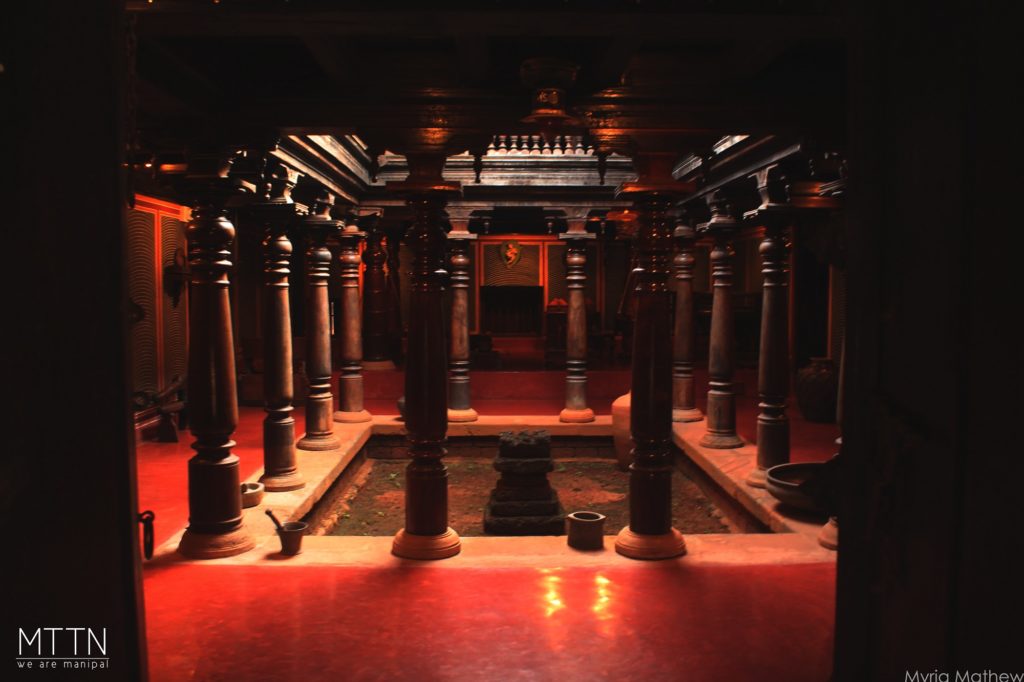
“To see the things that bind us to our culture- music, art, dance, artifacts- we need to go to a theatre, an art gallery or a museum. Entwining it in our architecture makes us live it again; see it whenever we wish to.” – Vijayanath Shenoy
Part 1/2 – The Heritage Village
Nestled humbly in an inconspicuous nook in the city of Manipal, lies a hamlet that stands a quiet bastion to the brilliant architecture of an all but forgotten age. The Heritage Village in Manipal is an internationally recognized heritage site, and yet among student folk, it remains something most of us in the city stumble upon by a fortunate stroke of serendipity. Vijayanath Shenoy built the Hasta Shilpa as a passion project in the 70s and 80s, the objective of which was to preserve culture and heritage in the wake of the wanton modernization of the world.
The idea would eventually grow into what we see today as the Heritage Village, just a couple of stones’ throw away from the Venugopal Temple gate of the MIT campus. This project stemmed from a personal quest, starting as merely a small home rebuilt with relinquished relics and intended only as Mr. Shenoy and his family’s residence. However, the swarm of tourists it attracted gave way to the Heritage Village, a museum frequented by those with a genuine interest in culture.
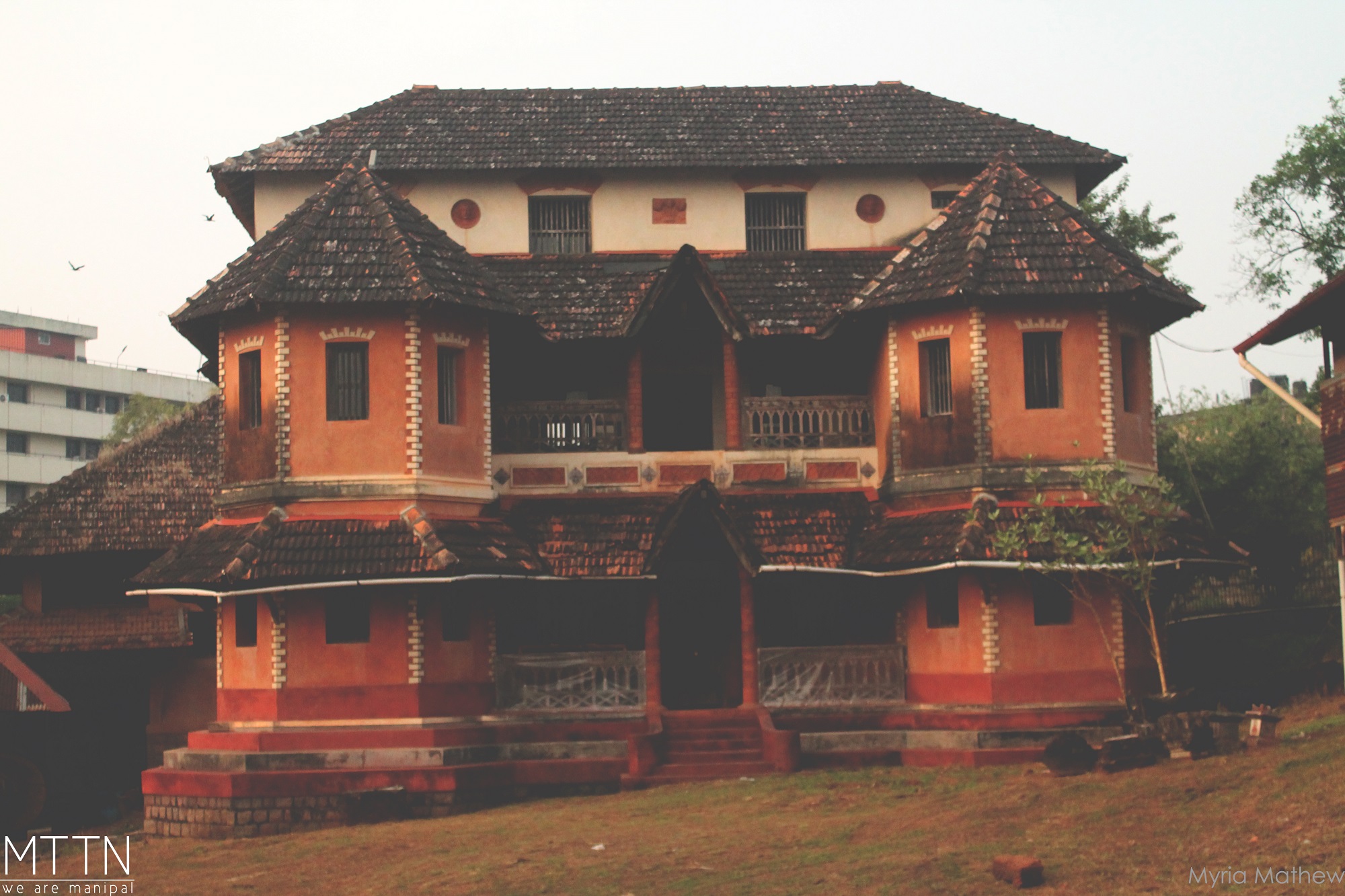
MTTN had the distinct honour of getting a guided tour of the place, courtesy of Mr. Thomas and Ms. Shanti as well as meet the man, Mr. Shenoy himself before the Heritage Village was officially opened to the public. This will be a two-part series, in fond memory of Mr. Vijayanath Shenoy – to celebrate his ideas and attempt to convey his passion. Let’s begin by taking a look at a few of the 26 buildings in the 7-acre village.
Kunjur Chowkimane: A 200-year old, two-storey structure, this courtyard house was characteristic to a Brahmin household materialized in Kerala. From the kitchen and granaries, to the positioning of the rooms, everything was meticulously placed there to serve a scientific as well as an aesthetic purpose. It primarily housed a priest’s family, which was greatly evidenced by the remnants of their lifestyle, as articulated by the various artefacts within the courtyard. In keeping with the social traditions of the time, the house was built to support maximum interaction among the members, and minimum privacy. All pieces and objects of the house were painstakingly documented, numbered, and transported to paint an authentic portrait of what once was.
Harihara Mandir: Built originally in 1216, this structure is a plethora of mysteries neatly structured and intertwined to form a grotesque architectural marvel. Traditionally built to house Vishnu, Shiva and Parvati, this temple contains intricate designs that have remained undeciphered for about 800 years.
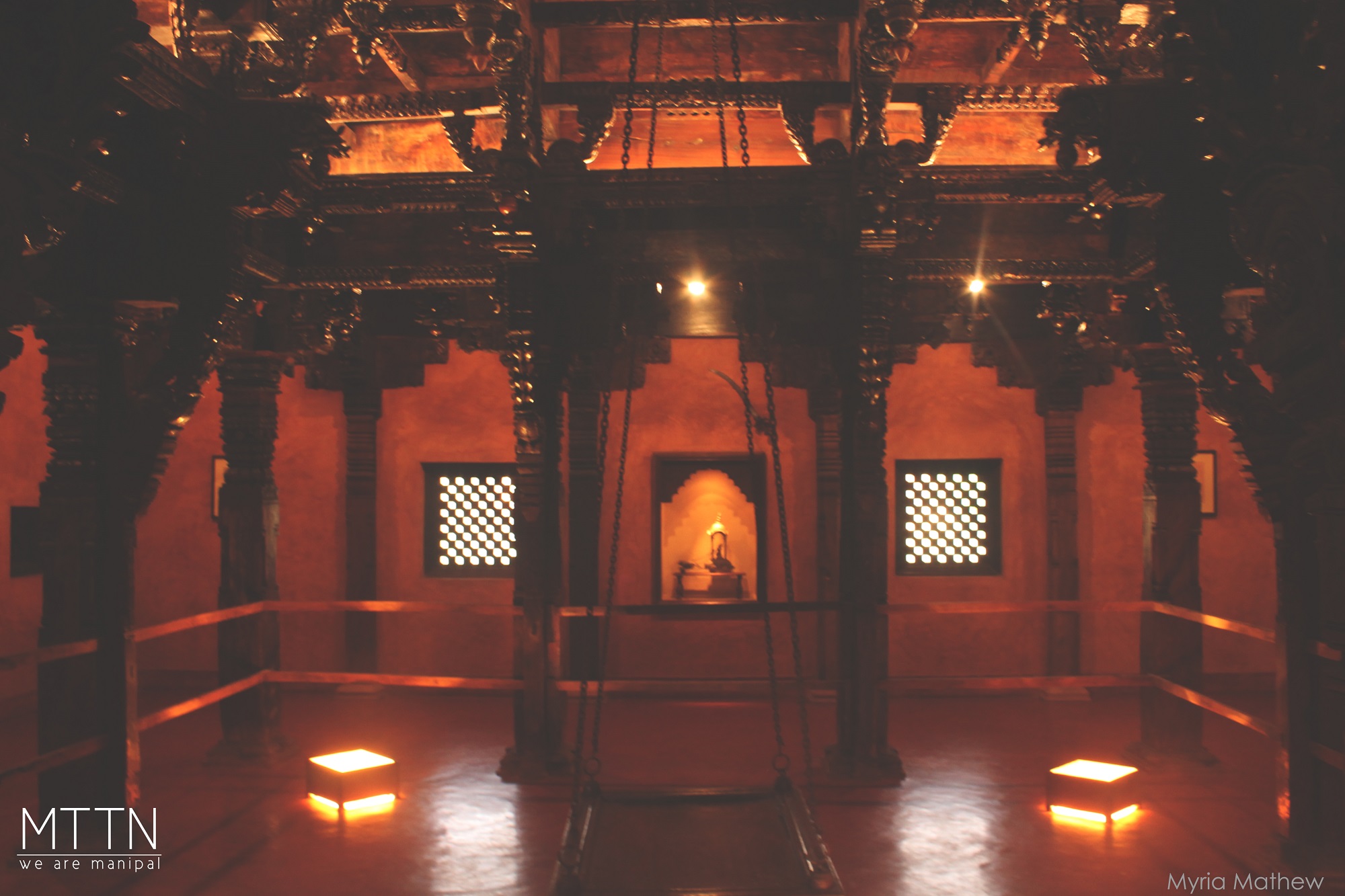
Kamal Mahal: An architectural spectacle built in the Kakanoor district of Karnataka in 1341, Kamal Mahal was supposedly the private office of the military chief governor of the Vijayanagar Kingdom. The front of the Mahal consists of a Darbar hall, adorned with Kalamkari textiles on the walls, while the rear (the king’s office) showcases carved pillars constructed in steps, much like a 3-dimentional jigsaw puzzle, that can be dismantled and assembled knowing the pattern of arrangement.
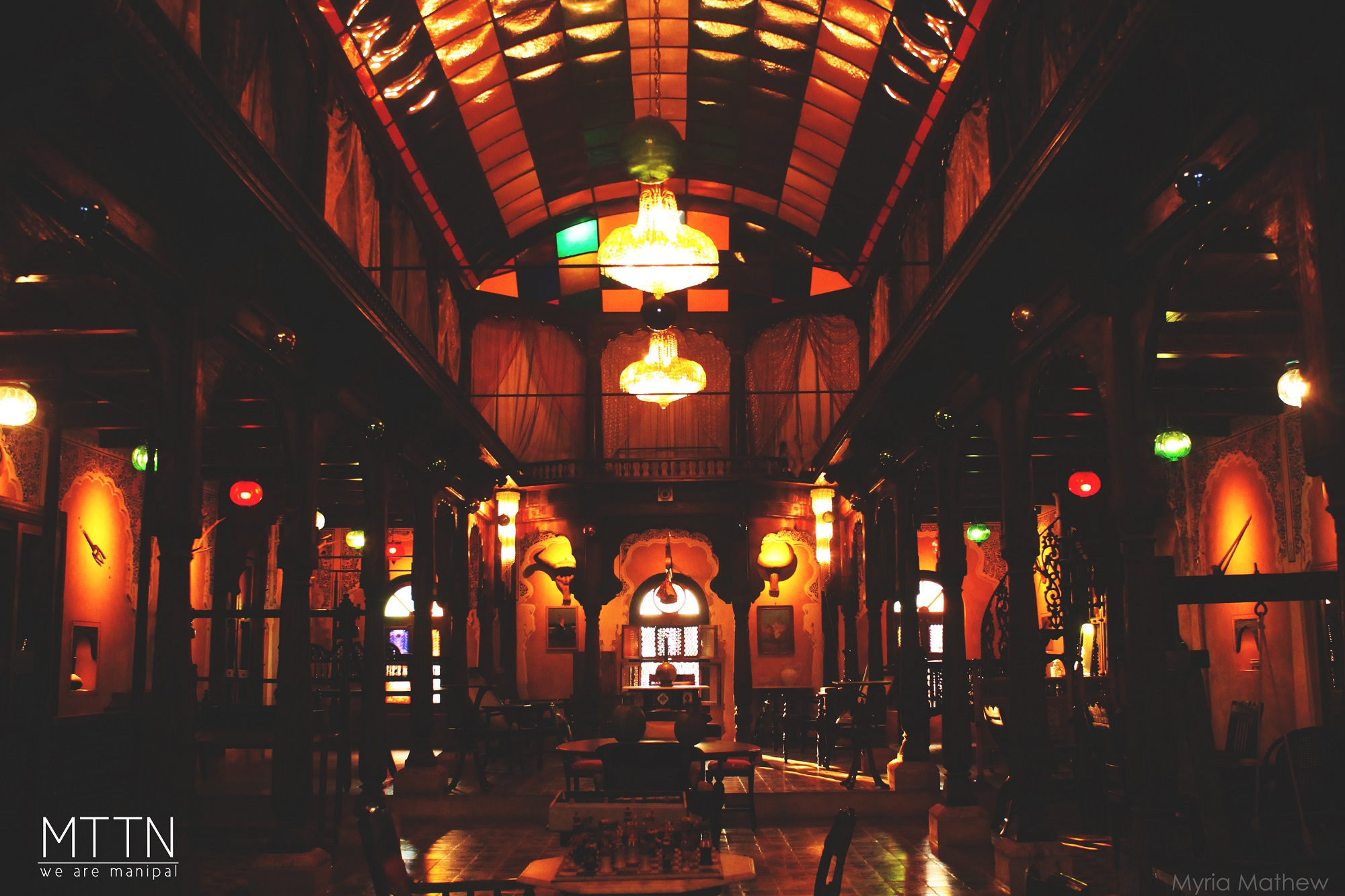
Mudhol Palace: This palace was built two centuries ago by the Maratha rulers of Ghorpade. The first thing you’ll notice is the distinct way in which the colours of the windows affect the general lighting inside the palace, which adds an aura of grandeur to the already existing historical elements present. The grand false roof was transported as one piece, in a specially assembled truck all the way from Mudhol of Bagalkot to the Village!
Deccan Nawabi Palace: What strikes first upon entering this Palace is the sheer amount of work that must’ve gone into its building and filling up with memorabilia to show for the hundreds of years of culture that it represents. The structure of the Deccan Nawabi palace reflects the living style of the Nawabs of Barid Shahi dynasty in a village near Humnabad, in the early 19th century. The restructured Mahal has coloured Belgium glass windows, a German tiled flooring, chandeliers from Austria, empty imported wine and ittar (perfume).
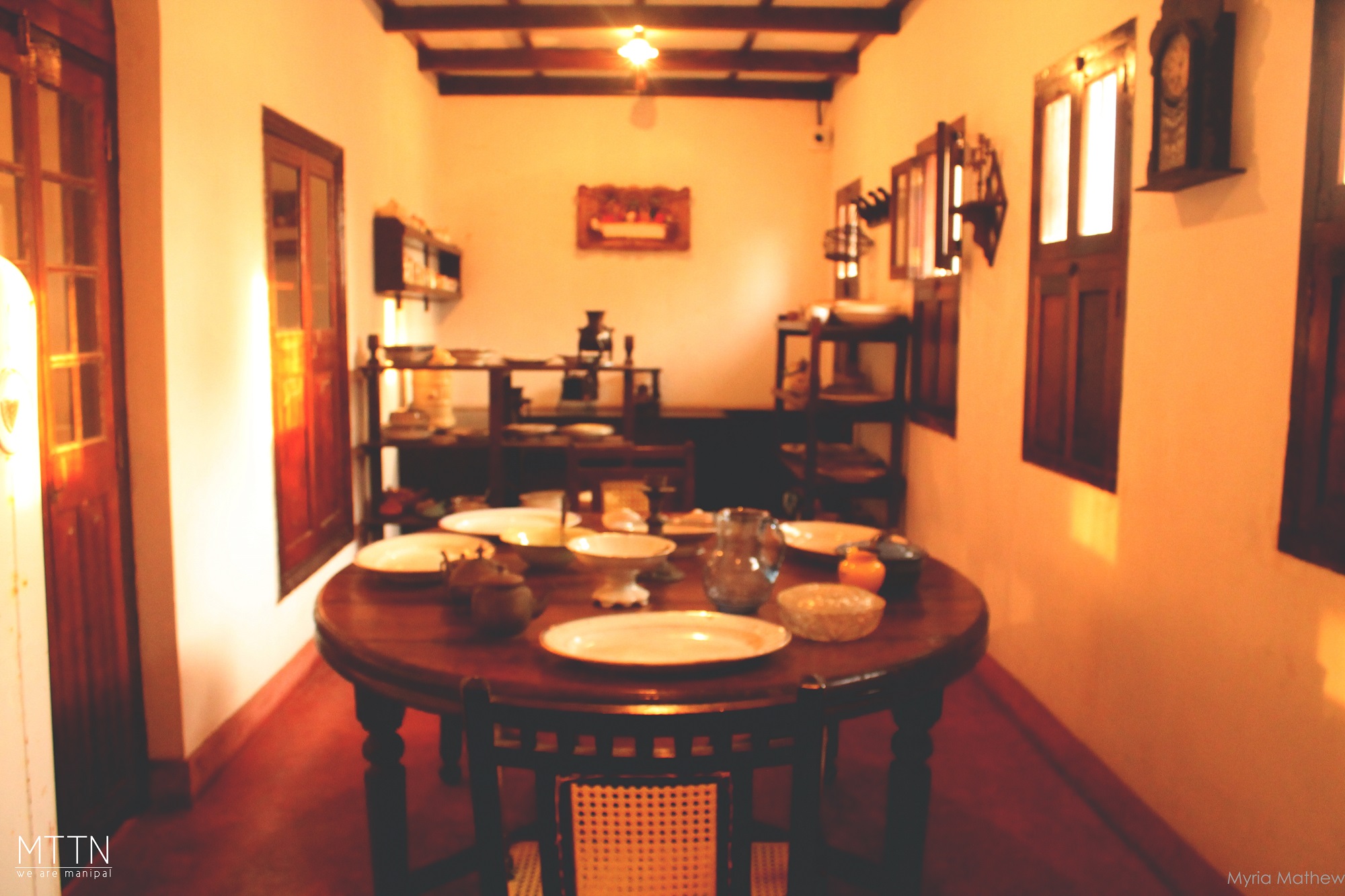
Mangalorean Christian House: Complete with symbols of Christianity and Portuguese-influenced details, this house is a quintessential traditional Christian missionary’s house from Chikmagalur. The house displays items of typical interests of the Mangalorean Christians of that period, such as hunting, photography, and music. Bursting with fascinating objects (from kerosene projectors to coal irons), and carols adrift in the background, this house holds a vibe completely unlike any other in the heritage village.
Raja Ravi Varma Museum and the Museum of Thanjavoor Paintings: The art museum is an homage to one of the most prolific personalities of Indian art. In it, hundreds of litho stones with impressions of Varma’s paintings, which were acquired by the Trust from Malavli near Pune, have been displayed. It also houses German printing machines which are about a hundred years old, complete with the original artefacts that were used in the process of printing.
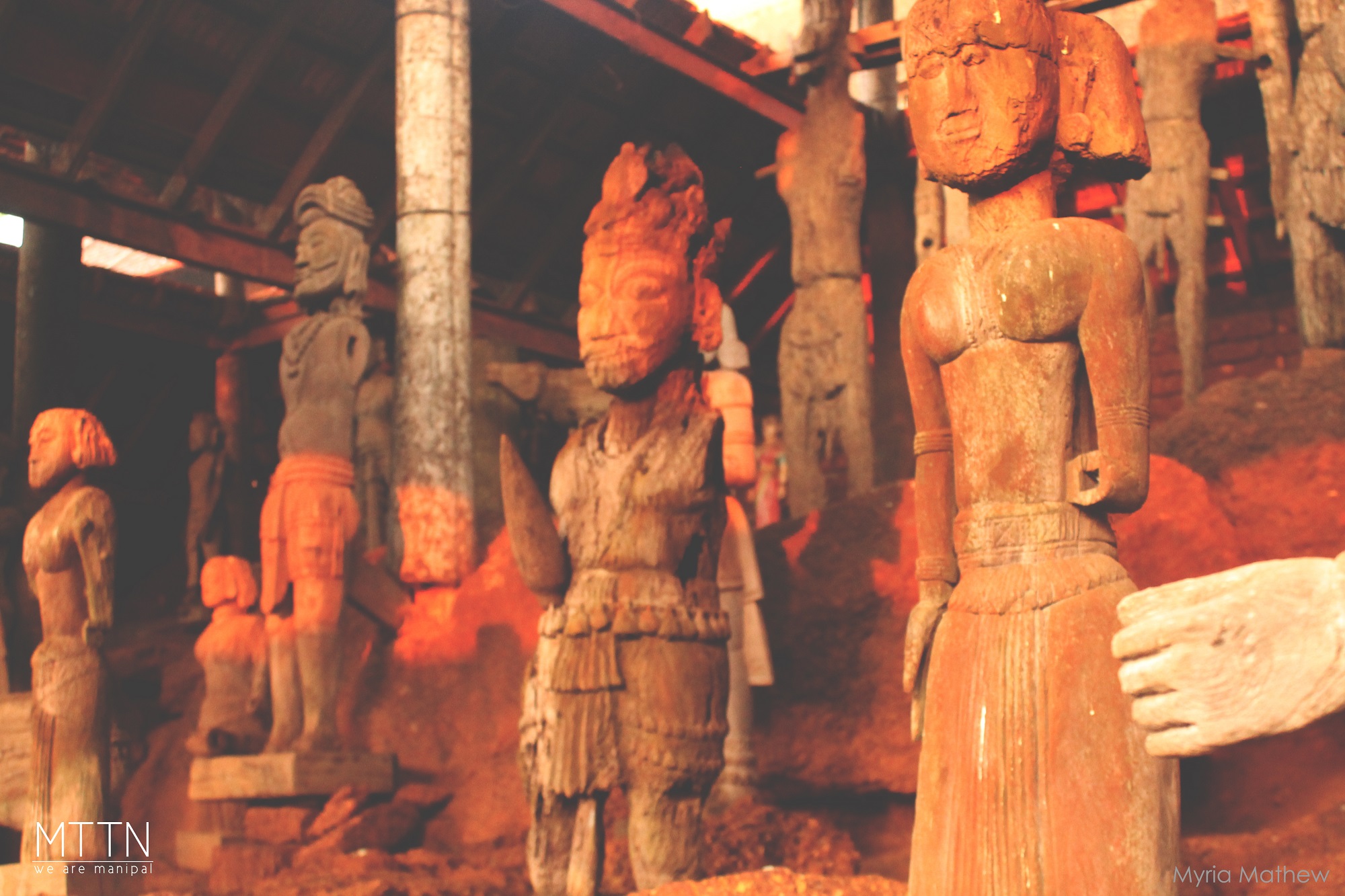
Apart from the dedicated structures inside are the various rocks that were also transported from faraway places, which have been arranged in an aesthetic manner, that have made them one of the more famous attractions at the Heritage Village.
Hasta Shilpa, literally translating to ‘Creation by hand’, resurrected the age-old and extraordinary craftsmanship and masonry once prevalent in South India within the confines of the Village. The entire project took over a decade for its completion, owing to the scrupulousness which reflects in each structure; Mr. Shenoy saw to it that all houses were meticulously reconstructed, giving utmost attention to details, including the kind of music playing inside each house.
There is an arcane attractiveness held by ancient objects, a mystic aura that teleports us back in time, which is exactly what the Heritage Village makes you feel. Perhaps that’s why after its completion, Vijaynath Shenoy chose to spend the remainder of his life there. As charming as the place was, even more spectacular was talking to the man behind it all. His pain was his fuel, his passion was the spark, and he was the rusted engine revving up to life. His anger toward modern architecture, and on the decay of the roots that embedded us to our culture drove him to endure every hardship to turn Hasta Shilpa from a possibility to a reality.
Stay tuned for the second part of this series, which recounts Mr. Vijaynath’s interview with MTTN.
—Rahul Basu and Tejal Khullar for MTTN
—Picture Credits – Myria Mathew
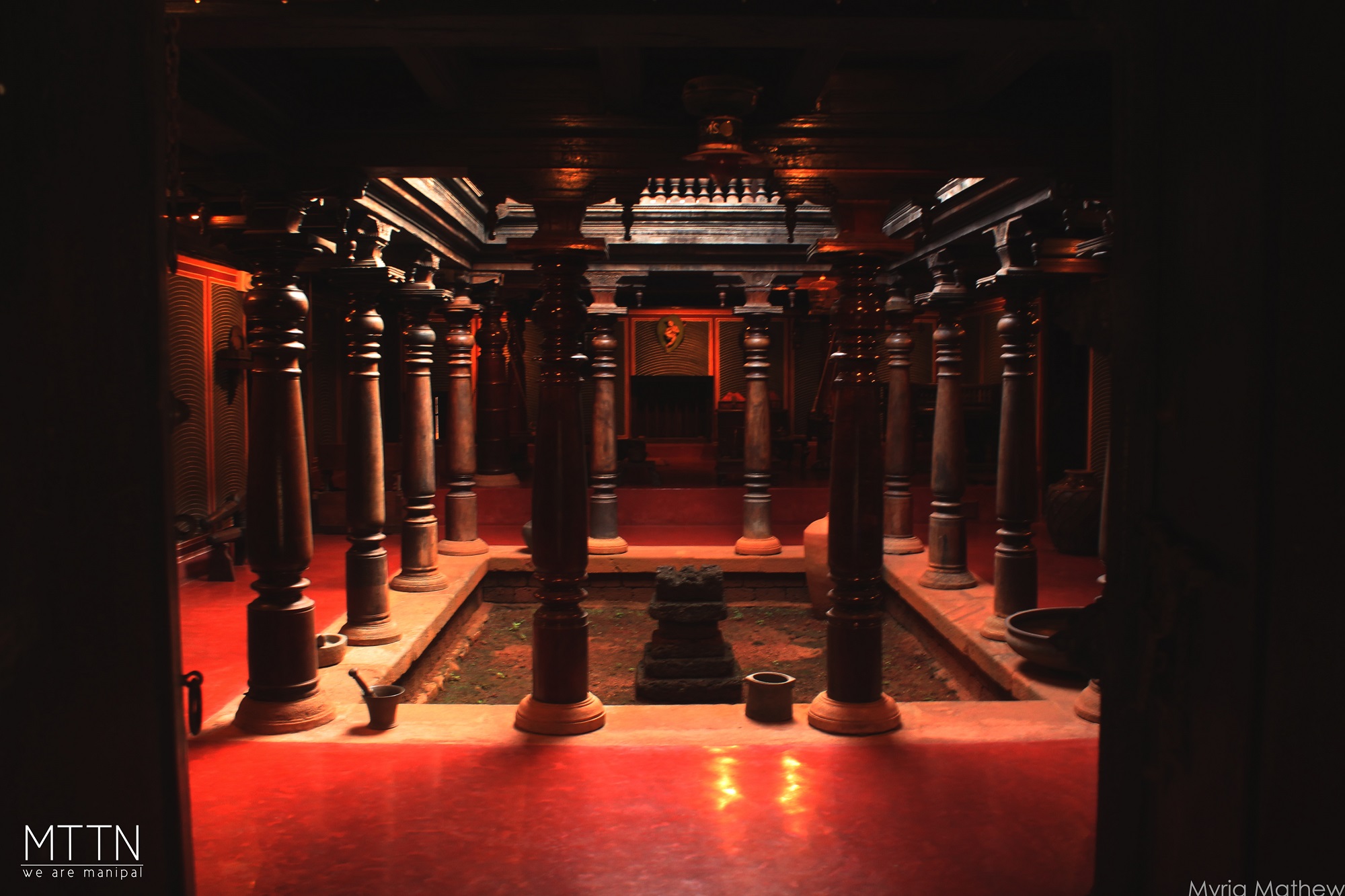
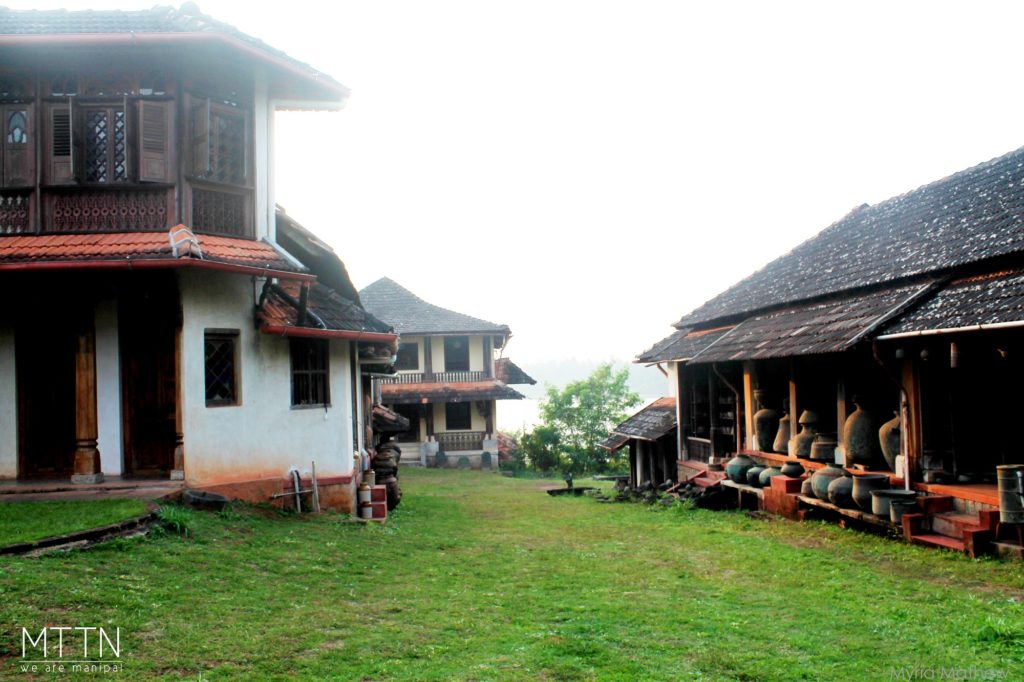
Leave a Reply
You must be logged in to post a comment.